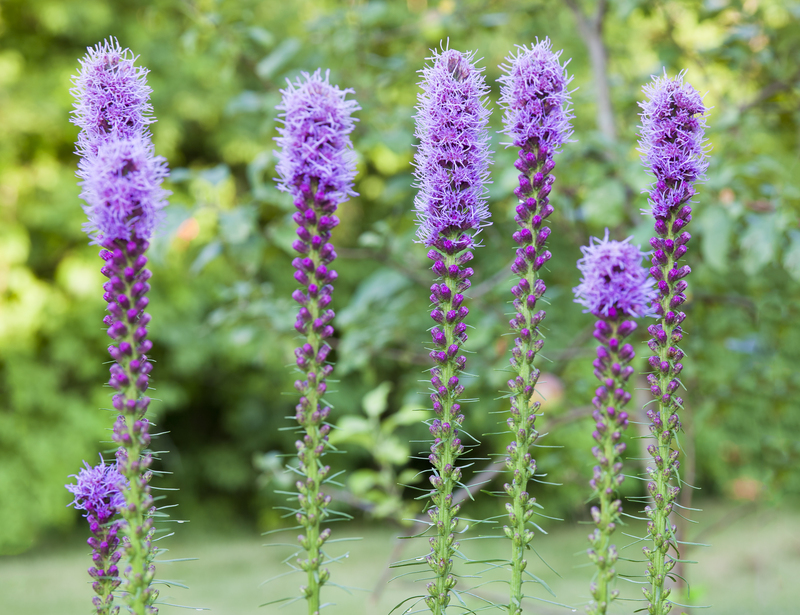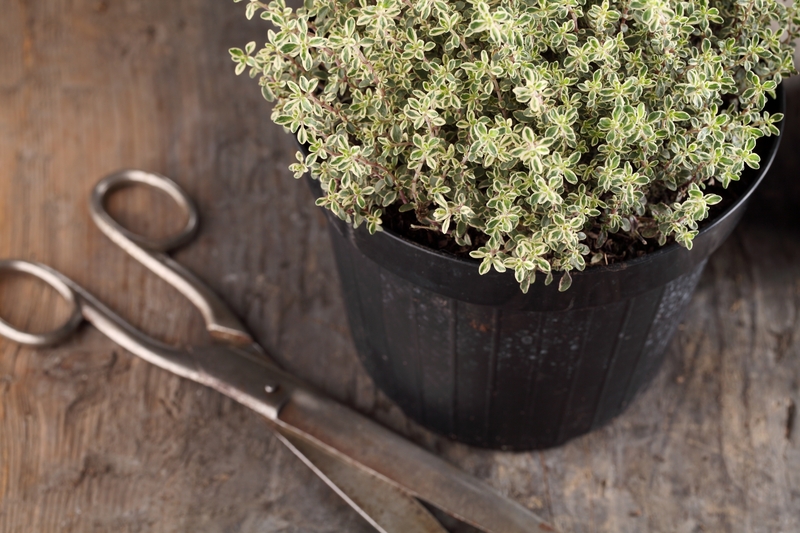Unveil the Mystery of Orchid Maintenance
Posted on 15/08/2025
Unveil the Mystery of Orchid Maintenance: Mastering the Art of Orchid Care
Orchids are among the most captivating and exotic plants you can bring into your home or garden. Their striking beauty, unique shapes, and delicate blooms have fascinated plant enthusiasts for centuries. However, orchid maintenance is often misunderstood, creating an air of mystery around proper orchid care. This comprehensive guide aims to unveil the mystery of orchid maintenance, empowering you with the knowledge and confidence needed to nurture these stunning plants so they flourish for years to come.

Why Do Orchids Seem So Mysterious?
Orchids comprise one of the largest and most diverse plant families, with over 25,000 species and 100,000 hybrids. Many newcomers are intimidated by tales of difficulty, but with the right orchid growing tips, anyone can enjoy thriving blooms. The key is understanding their unique needs, derived from their native environments, and adapting care routines accordingly.
- Orchids aren't fragile--they're simply different!
- Most commonly kept orchids, like Phalaenopsis, adapt well to homes.
- Proper information is your best tool for orchid plant maintenance.
Choosing the Right Orchid: First Step in Maintenance
Embarking on your orchid journey starts with selecting a species or hybrid suited to your environment and experience level. Here are a few popular options, each with distinct maintenance needs:
- Phalaenopsis (Moth Orchid) - Ideal for beginners, they thrive in typical indoor conditions.
- Cattleya - Famous for their flamboyant blooms and intoxicating fragrance.
- Dendrobium - Known for their extended flowering periods and versatility.
- Oncidium - Require slightly more light and are loved for their dancing "spray" of flowers.
- Vanda - Stunning but high-light lovers, well-suited for greenhouse environments.
Tip: If you're new to orchids, start with Phalaenopsis for support in understanding fundamental orchid care principles.
The Pillars of Orchid Maintenance
1. Light: The Lifeline for Orchids
Light is crucial for healthy orchid growth and flowering. But how much and what kind? Understanding light for orchids can demystify much of their care:
- Phalaenopsis: Prefer bright, indirect (filtered) light.
- Cattleyas & Oncidiums: Need more intense light, tolerating some gentle morning sun.
- Vanda: Require direct sunlight for several hours daily.
Signs of incorrect lighting:
- Dark green leaves indicate too little light.
- Yellowish or reddish leaves suggest too much sun.
For indoor orchid plant maintenance, a south or east-facing window is best, using sheer curtains to prevent leaf burn.
2. Watering Wisdom: Less Is More
Overwatering is the most common mistake in orchid care. Unlike typical houseplants, most orchids are epiphytes, adapted to periodic drying:
- Water only when the potting medium is nearly dry.
- Avoid letting roots sit in stagnant water--drainage is crucial.
- Use tepid water, preferably rainwater or distilled.
Insight: Stick your finger about an inch into the growing medium. If it feels dry, it's time to water. If not, wait a day or two.
3. Humidity: Creating a Tropical Haven
Orchids hail from humid climates. Without sufficient moisture in the air, their roots and leaves can suffer:
- Ideal humidity: 40-70%, depending on the orchid type.
- Use humidity trays or room humidifiers to raise levels indoors.
- Mist leaves lightly in the morning--but avoid standing water.
Grouping orchids together can also increase ambient moisture naturally.
4. Potting Mix and Repotting: The Foundation of Orchid Health
A major orchid care secret lies beneath the surface--quality orchid growing media is essential:
- Never use regular potting soil!
- Choose specialized orchid mixes using bark, sphagnum moss, perlite, or coconut husk.
- Repot every 1-2 years or when the medium breaks down or roots outgrow the pot.
Repotting Tip: Always use sterile pots and trim away dead roots with disinfected scissors to prevent disease.
5. Feeding Orchids: The Right Balance
Orchids are sensitive to heavy feeding, but regular, light fertilizing supports healthy growth and abundant blooms:
- Use a balanced, water-soluble orchid fertilizer (e.g., 20-20-20)
- Fertilize "weakly, weekly" during active growth. Dilute the fertilizer to half or quarter strength.
- Rinse the potting mix with water every few weeks to rinse out salt buildup.
During winter dormancy, reduce or stop fertilizing until new growth appears.
Orchid Maintenance Through the Seasons
Spring and Summer
- Increase watering as growth accelerates.
- Feed regularly--blooms and roots are developing.
- Watch for pests as temperatures rise.
Autumn
- Some orchids enter dormancy--reduce water and fertilizer.
- Bring orchids indoors if temperatures drop below 55?F (13?C).
Winter
- Keep orchids away from cold drafts and radiators.
- Monitor humidity as indoor heating dries air.
- Water sparingly, focusing on root health.
Common Issues in Orchid Plant Maintenance--And How to Solve Them
Pests and Diseases
- Mealybugs and Aphids: Remove manually or with insecticidal soap.
- Spider Mites: Increase humidity and wipe leaves with a damp cloth.
- Root Rot: Caused by overwatering--trim damaged roots and repot in fresh medium.
Proactive Care: Isolate new orchids for a few weeks and use sterilized tools to prevent spreading pests and diseases.
Leaf Problems
- Wrinkled leaves? Usually a sign of underwatering or root issues.
- Black spots or mushy patches can indicate fungal infections--improve airflow and remove affected areas.
Failure to Bloom
- If leaves appear healthy but no flowers, check light availability--lack of sufficient light is most often the culprit.
- Some orchids need a slight temperature drop at night to trigger blossoming.
Expert advice: Don't give up if your orchid doesn't bloom right away--consistent care is key.
The Art of Pruning and Deadheading
Learning when and how to prune is vital for advanced orchid maintenance:
- Deadhead spent blooms to encourage new flower spikes.
- For Phalaenopsis, trim the old flower spike just above a visible node to possibly induce a secondary spike.
- Remove yellow or diseased leaves at the base--never pull them off, as this may damage the plant.
Propagation: Unveiling New Generations of Orchids
Orchid propagation is both rewarding and a true mark of orchid maintenance mastery. There are several methods:
- Keiki (baby plant) formation on Phalaenopsis and Dendrobium spikes. These can be potted separately once roots develop.
- Division for sympodial types (Cattleya, Oncidium): divide clusters when repotting, making sure each piece has healthy roots and bulbs.
- Backbulb propagation in mature plants for species that produce pseudobulbs.
Orchid Maintenance For Long-Term Success: Favourite Tips of the Pros
- Observe your orchid closely--changes in appearance are your best guide to its needs.
- Keep a care journal, noting watering schedules, fertilizer days, and blooming times.
- Don't be afraid to ask for advice! Join a local or online orchid society for community support.
- Rotate orchids periodically so all sides get adequate light.

Frequently Asked Questions: Unlocking Further Orchid Maintenance Mysteries
How often should I water my orchid?
It depends on the orchid type, pot and medium, and home environment. Usually once every 7-10 days, but always check moisture in the medium first.
Can I use ice cubes to water orchids?
Although some sources recommend it, ice cubes may shock the roots. Stick to room temperature water for the healthiest results.
Why are my orchid leaves turning yellow?
Yellow leaves may signal too much water, insufficient light, or natural leaf aging. Adjust your care as needed after ruling out disease or pests.
Should I mist my orchid?
Light misting is fine, mainly in the morning. Avoid water pooling in the crown or between leaves, which can cause rot.
Unveil the Mystery of Orchid Maintenance and Enjoy Their Timeless Beauty
Caring for orchids isn't about solving an intricate puzzle--it's about respecting the unique needs of these breathtaking plants. With proper orchid maintenance tips, patience, and a little observation, you too can nurture healthy, flourishing orchids year-round. Remember, each orchid is a living masterpiece--a testament to the wonders of nature and your dedication as a grower.
Embrace the adventure. Let your orchids thrive, and soon, you'll become an orchid caretaker who no longer wonders at the mystery, but celebrates the art and science of orchid plant maintenance daily!

